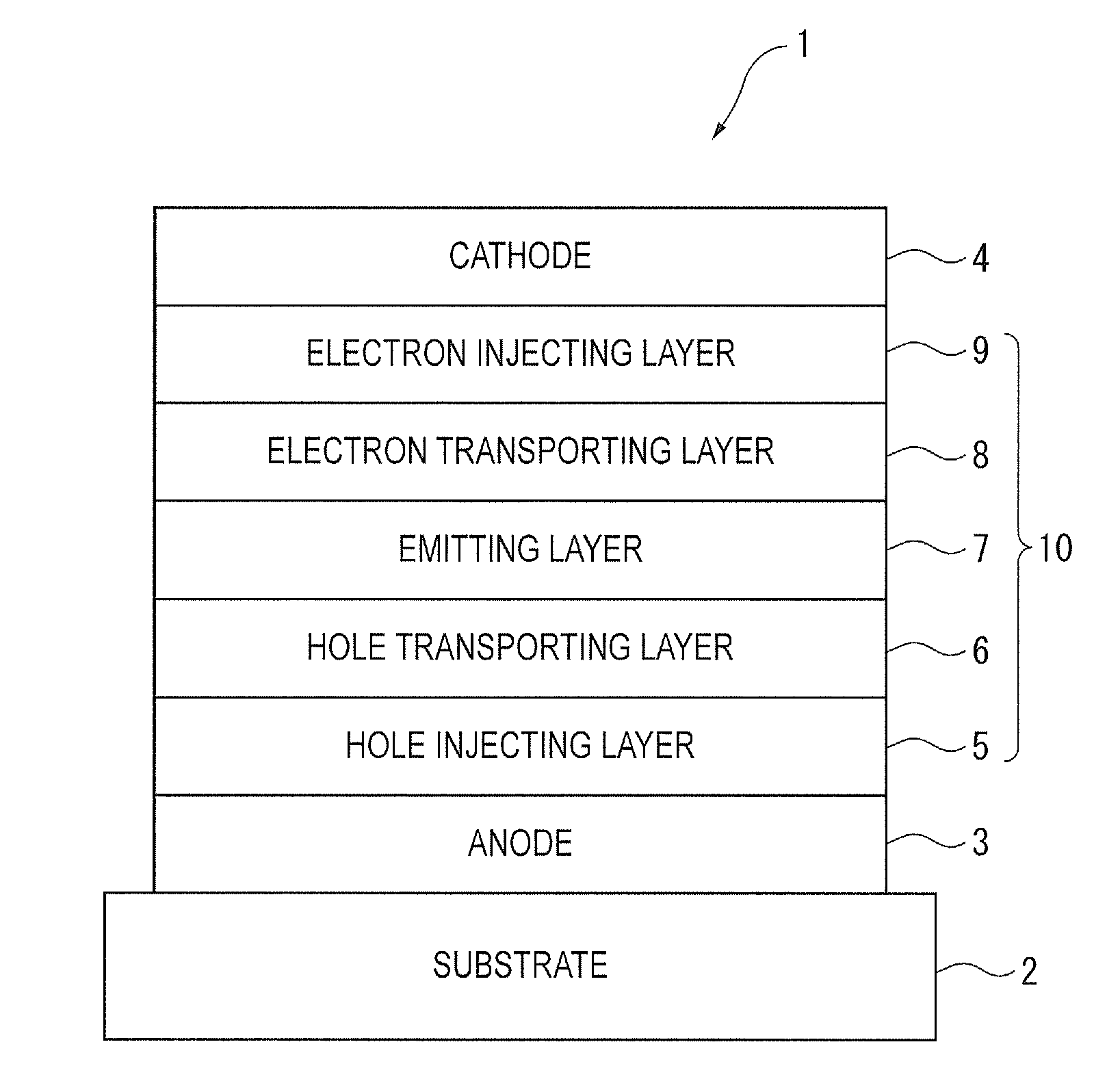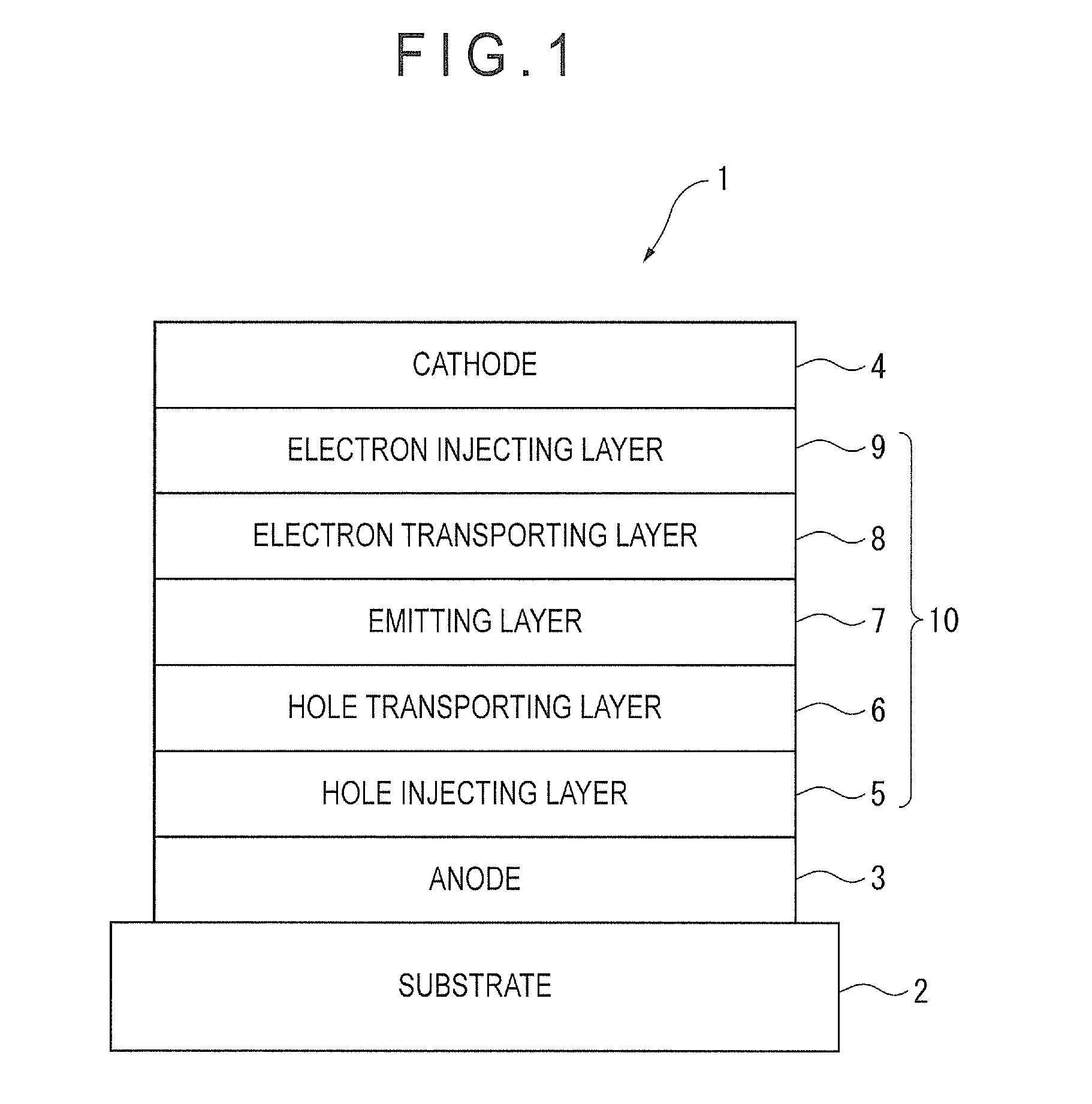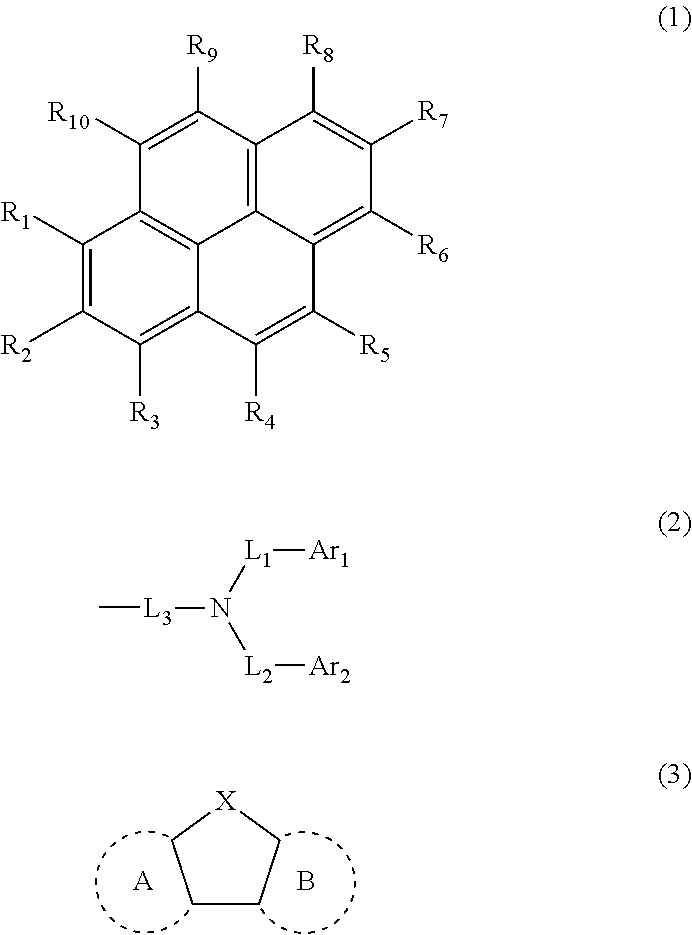Aromatic amine derivative and organic electroluminescent element using same
an organic electroluminescent element and aromatic amine technology, applied in the direction of organic chemistry, luminescent compositions, anthracene dyes, etc., can solve the problems of insufficient, inconvenient use of organic el devices, and inability to disclose the use of aromatic amine derivatives as luminescent materials
- Summary
- Abstract
- Description
- Claims
- Application Information
AI Technical Summary
Benefits of technology
Problems solved by technology
Method used
Image
Examples
embodiment (
Modifications of Embodiment(s)
[0236]It should be noted that the invention is not limited to the above exemplary embodiment but may include any modification and improvement as long as such modification and improvement fall within the scope of the invention.
[0237]For instance, in the organic EL device of the invention, the emitting layer may contain at least one of the luminescent material, doping material, hole injecting material, hole transporting material, and electron injecting material in addition to at least one of the aromatic amine derivatives represented by formula (1). Moreover, in order to improve stability against the temperature, humidity, atmosphere and the like of the organic EL device obtained by the invention, a protection layer can be provided on a surface of the device, or the entire device can be protected by silicone oil, resins and the like.
[0238]An arrangement of the organic EL device is not particularly limited to the arrangement of the organic EL device 1 show...
synthesis example 1
Synthesis of Compound 1
[0242]A synthesis scheme of a compound 1 is shown below.
[0243]In an argon gas stream, into a 300-mL three-necked flask, an amine compound 1 (2.6 g, 10 mmol), 4-iodobromobiphenyl (3.1 g, 11 mmol), copper iodide (I) (0.4 g), N,N′-dimethylethylenediamine (0.4 g), t-butoxysodium (1.7 g), and dehydrated toluene (100 mL) were put and reacted at 110 degrees C. for eight hours.
[0244]After the reaction, the reaction solution was extracted with toluene and dried with magnesium sulfate.
[0245]After being dried, the reactant was condensed under reduced pressure. The obtained crude product was purified by using a column. After the purification, the obtained solid was recrystallized with toluene and filtrated. After the filtration, the obtained product was dried to obtain a bromide 1 of 2.5 g.
[0246]In an argon stream, the bromide 1 (2.5 g (6 mmol)) and dehydrated xylene (100 mL) were added to a 300-mL three-necked flask and cooled to −30 degrees C. After being cooled, the mi...
example 1
[0250]A 120 nm-thick transparent electrode formed of indium tin oxide was formed on a glass substrate having a size of 25 mm×75 mm×1.1 mm. The transparent electrode served as the anode.
[0251]Subsequently, the glass substrate was irradiated and washed with ultraviolet ray and ozone, and then was set in vacuum deposition equipment.
[0252]Firstly, N′,N″-bis[4-(diphenylamino)phenyl]-N′,N″-diphenylbiphenyl-4,4′-diamine was deposited to form a 60-nm thick hole injecting layer.
[0253]Next, N,N,N′,N′-tetrakis(4-biphenyl)-4,4′-benzidine was deposited on the hole injecting layer to form a 20-nm thick hole transporting layer.
[0254]Next, the anthracene derivative EM2 (the host material) and the compound 1 (the dopant material) were co-deposited on the hole transporting layer at a mass ratio of 40:2 to form a 40-nm thick emitting layer.
[0255]Next, tris(8-hydroxyquinolinate)aluminium was deposited on the emitting layer to form a 20-nm thick electron injecting layer.
PUM
 Login to View More
Login to View More Abstract
Description
Claims
Application Information
 Login to View More
Login to View More - R&D
- Intellectual Property
- Life Sciences
- Materials
- Tech Scout
- Unparalleled Data Quality
- Higher Quality Content
- 60% Fewer Hallucinations
Browse by: Latest US Patents, China's latest patents, Technical Efficacy Thesaurus, Application Domain, Technology Topic, Popular Technical Reports.
© 2025 PatSnap. All rights reserved.Legal|Privacy policy|Modern Slavery Act Transparency Statement|Sitemap|About US| Contact US: help@patsnap.com



